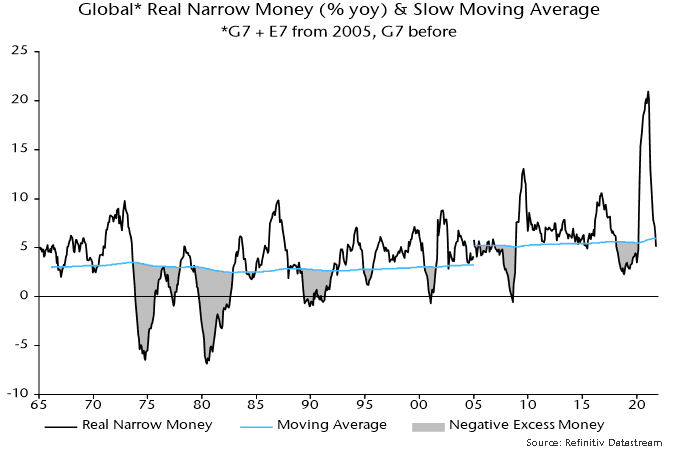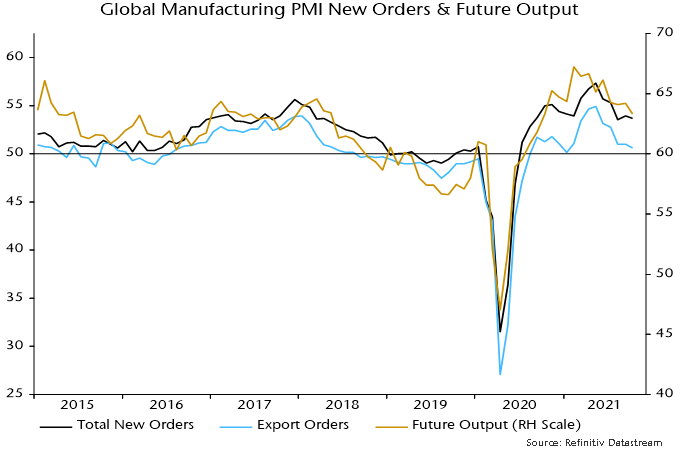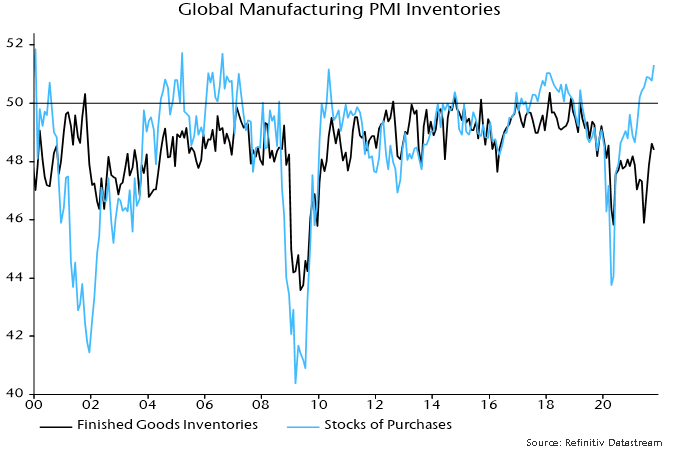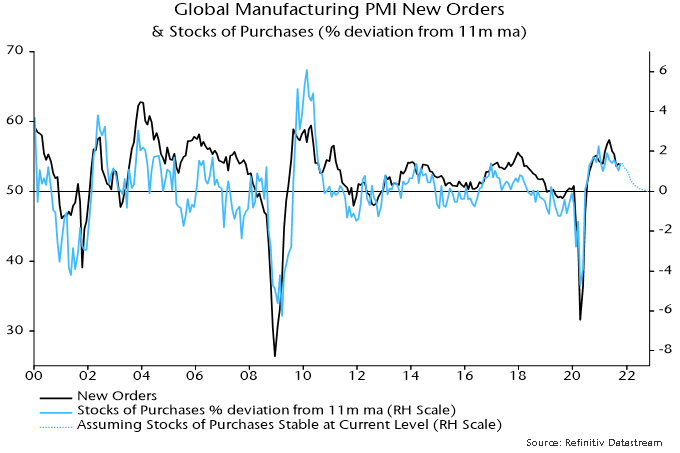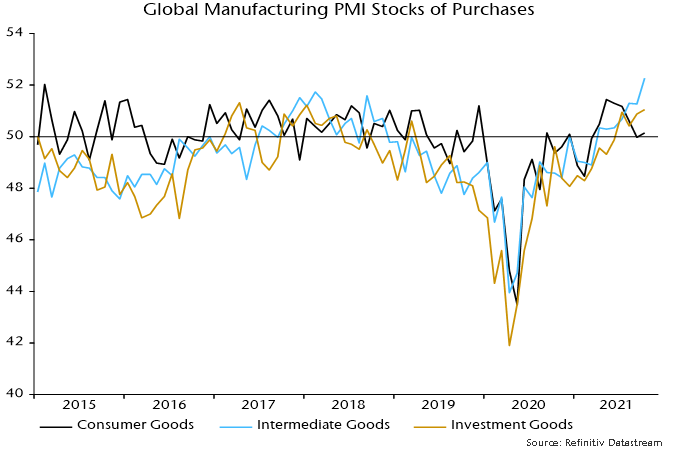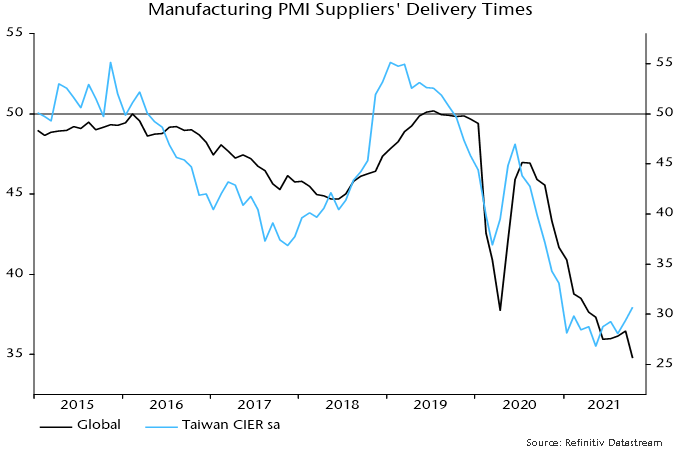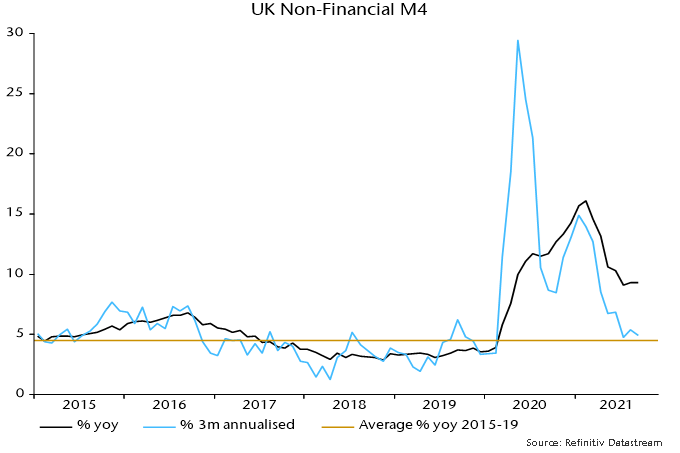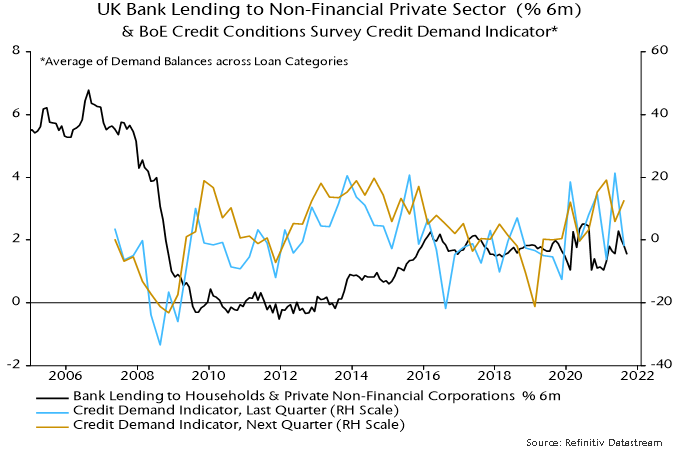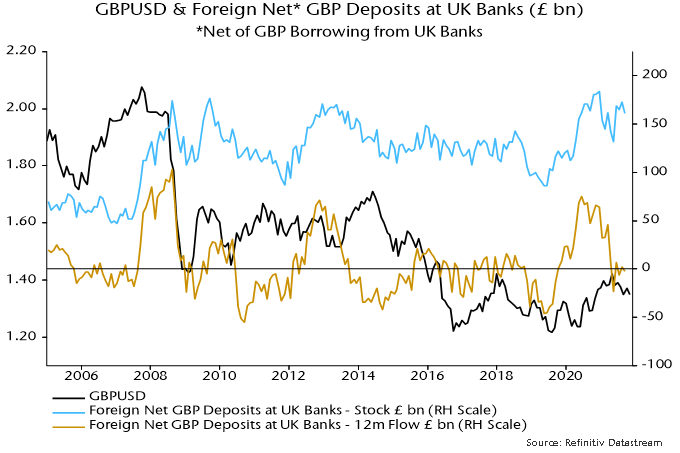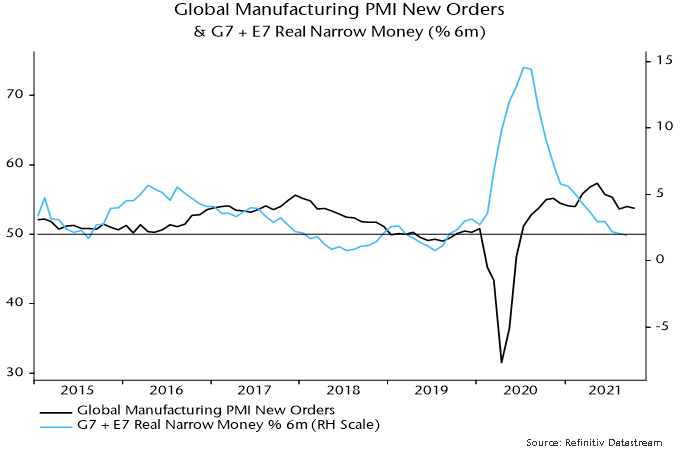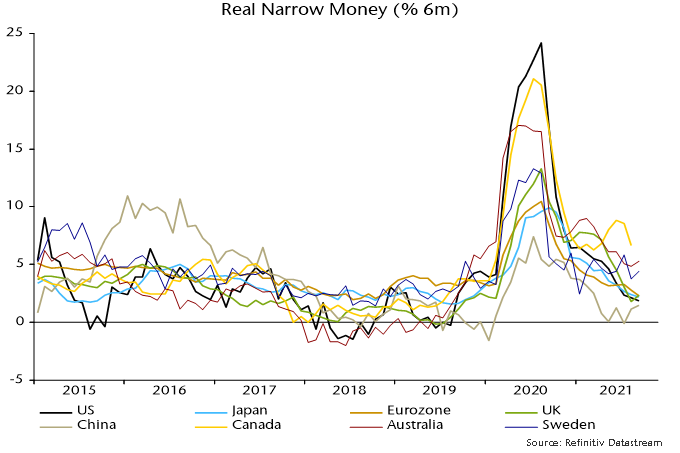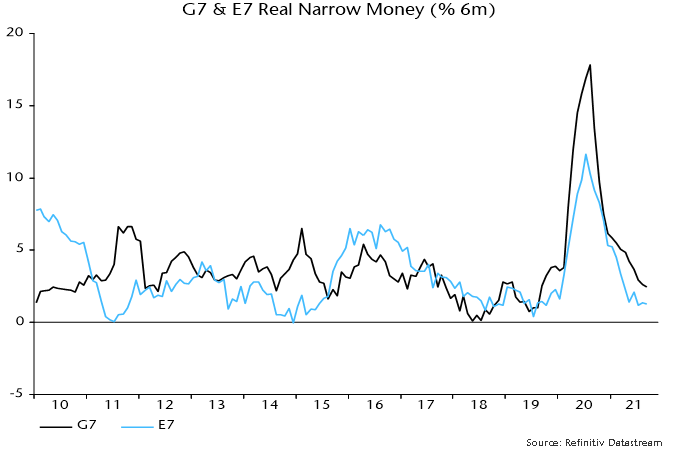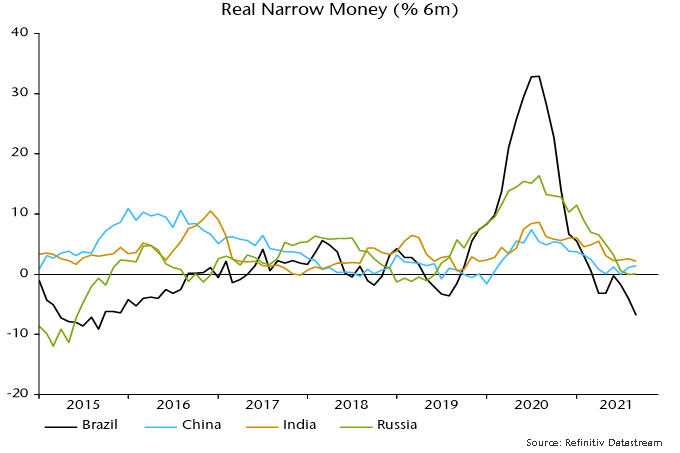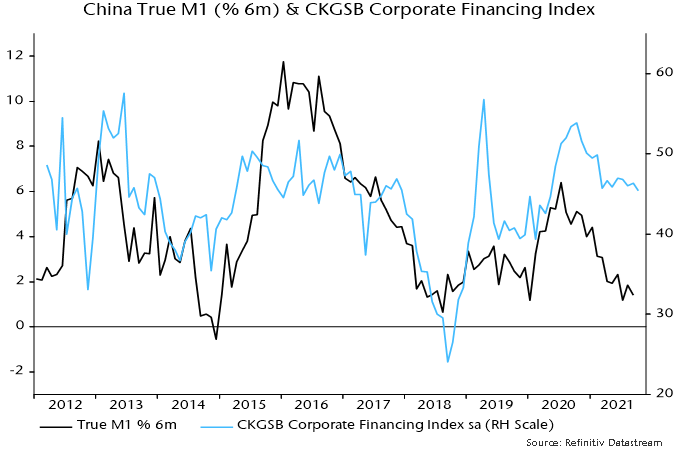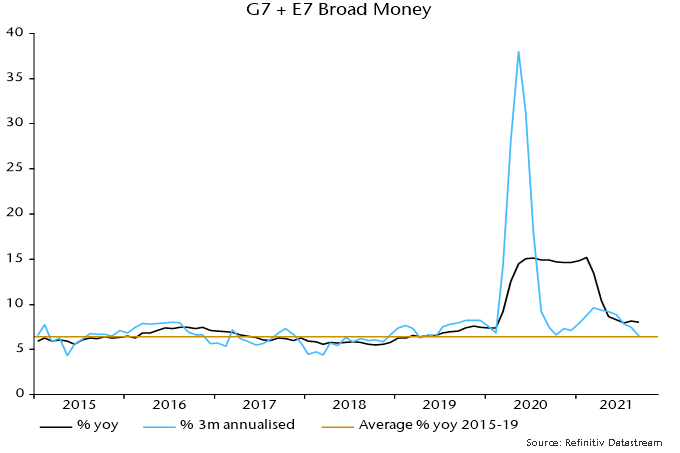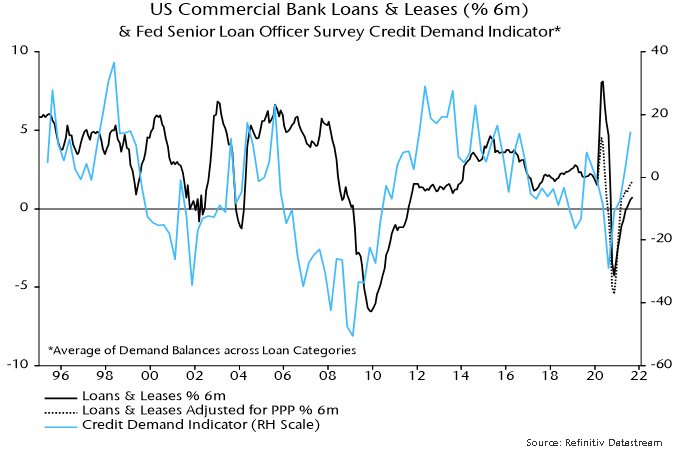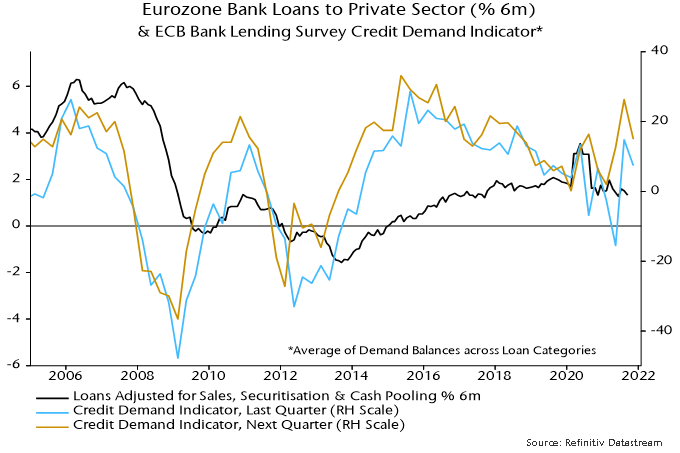Real Estate in Emerging Markets: Unlocking sustainable growth opportunities.
Emerging markets have had difficult times during COVID-19, however, we have seen that in several cases, the recovery has been faster than expected. Not only is this recovery due to higher vaccination rates, but also because of secular trends, especially in the emerging lower middle class where growth opportunities are just beginning. In our universe, one of the sectors where we see a great growth opportunity is in real estate. The main variables that drive tailwinds for the sector are:
- Sustainable growth of the country, which implies that the emerging lower middle class can climb the ladder;
- Low interest rates, inflation, and unemployment; and
- A consolidated industry with players who have good balance sheets and are focused on profitably.
In this environment, our largest overweight in the real estate sector is in India and Indonesia. One could argue that interest rates and inflation are currently on the rise in many countries, which is true. However, the rate hike process in Asian countries has been much slower, and structural growth remains intact. For example, in the case of India, current mortgage rates are at record low levels of under 7%, compared to more than 10% a decade ago. Indonesia rates are also likely to maintain low, which continues to favour growth in the real estate sector.
India’s last real estate cycle ended in 2013 and has not been able to recover since, due to several disruptions, such as demonetization in 2016, the roll-out of the Real Estate Regulatory Act in 2017, and the Non-Banking Financial Companies (NBFC) crisis of 2018. Likewise, India hasn’t experienced real price increases since 2013. Prices have increased 3-4% on average, below inflation each year and also below growth in income levels of around 8% per capita. So, what would make this cycle effectively sustainable from 2021 onwards? Some of the reasons were explained above. Moreover, In India, the real estate sector has experienced an industry consolidation that has driven inventory reduction (around 20%). With rising demand (also boosted by additional space required driven by the work-from-home scenario) and shrinking supply, price increases are most likely to occur for the following years; a phenomenon we haven’t seen in India for the last decade. Some factors that have contributed to the real estate sector’s boom include low interest rates, rising salaries, and explosive hiring’s (i.e., Infosys has hired close to 350,000 employees this year and salary hikes have been close to 120%). With government support to housing such as stamp duty cuts by the government of Maharastra, or Gujarat government measures in December 2020 such as the possibility of agricultural land being acquired for affordable housing, this support has changed sentiment and boosted demand.
In relation to housing affordability, mortgage installments in relation to monthly income have also been improving, changing the sentiments with all the other more favourable conditions. For example, in Mumbai, this index has improved from 93% in 2010 to 61% in 2020. In cities such as Ahmedabad, the index has improved to 24% in 2020, from 46% in 2010. This means that in this city, an average household needs to spend 24% of its income to pay monthly installments for the respective loan. Mumbai remains the most expensive market, but levels are improving.[2]
Another relevant variable to monitor are launches and inventory. Companies need to increase launches overall in order to capture increasing demand in a sustainable way. In 2015 and 2016, launches were approximately between 475 and 501 million square feet, decreasing to 135 million square feet in 2021.[3] Launches decreased progressively during these years, essentially due to inventory levels being too high. Inventory months hovered around 40-45 days between fiscal year (FY) 2016 and FY2020, and lowered 40 days in FY2021. In noting this, companies reinforced their efforts to liquidate their inventory first, with prices barely increasing at a 1% compound annual growth rate (CAGR) over 2015-2021, far beyond inflation. Inventory levels have lowered to 916,195 units in FY2021, to the lowest levels in 7 years.[4] Moreover, as FY2021 was a COVID-19 impacted year, the decline in new launches was steeper than normal, as H1FY2021 was virtually a wash-out and H2FY2021 was all about monetizing existing unsold inventory.
Moving forward, we should expect launches to pick up again. We foresee that the most relevant Indian developers are well positioned to capture this window of opportunities, considering good cost of funding, low leverage (as several raised equity during 2019-2020), liquidity access, lower inventory levels, and market share gains are likely to remain consistent due to the consolidation of the industry.
The real estate sector is behaving quite well in terms of volume increases, although sustainable price increases that can also mitigate the hike in raw material prices remain as a key challenge. The real estate market in India is very important for the country’s development as it is worth USD 150-180 billion, or 6-7% of the GDP, and is expected to reach 13% of the economy by 2025. It is the second highest employment generator in the country, after agriculture.[5]
In terms of the non-residential market, in 2019, the Indian office market closed with a record high of transactions, increasing by 27% to levels of 60 million square feet during the year. In 2021, new completions surpassed transactions for the first time since 2013. During FY2021 to FY2022, in the organized market, tech-related companies accounted for around 40% of office transactions in India, with renewed massive hiring and positive business forecasts anticipate their vacancy will remain low.[6]
We still can see some work-from-home effects lowering absorption levels, nevertheless, tech and other related sectors have lowered vacancies, which we expect to maintain at reasonable levels. Their expansion plans are also likely to improve net absorption. In the first nine months of 2021, transactions increased by 13% and completions by just 6% in relation to the same period last year, showing that the levels of activity are increasing to a great extent. Likewise, projects set for completion in 2021 and 2022 are pre-leased by multinational companies. Capitalization (cap) rates in key areas such as Mumbai remain very healthy at 6-8%. Economies, such as India’s, with a young workforce and without adequate infrastructure (possess separate spaces for work from home and also lacks air conditioning) favour a hybrid model, although with less working from home than in developed markets. Considering all the aforementioned, office demands and vacancies are expected to remain at healthy levels in the medium term. Bangalore, Mumbai CBD, and Pune maintain the lower vacancy levels in the main cities, hovering around between 5 and 10%.[7]
Prestige Estates Projects (PEPL IN)
In Indian real estate, Prestige Estates Projects is one of our key holdings. Over the last decade, the Prestige Group has firmly established itself as one of the leading and most successful real estate developers in India across all asset classes. The company currently has its principal presence in South India (Bangalore) and is the main developer to boast such a widely diverse portfolio, covering the residential, commercial, retail, leisure, and hospitality segments. During 2HFY2021, Prestige signed a term sheet with Blackstone to divest its entire stake in six operational office assets (6.6 million square foot), an 85% stake in nine retail malls (3.3msf) and a 50% stake in four under-construction office assets (7.4msf), along with two hotel assets – Oakwood and Aloft. The enterprise value, as per the term sheet, was settled at Rs 92 billion, with a cap rate of 8.5%. Part of the transaction will be used to clear the debt of the company’s annuity portfolio while the remaining inflow is likely to be utilized for expanding a residential pipeline (new joint venture/joint venture development agreements) and also accelerating capex for the annuity portfolio. The yield on cost expected for the new developments is 15-20%, much higher than the cap rate of the sold portfolio. Prestige will have almost 0.2x net gearing after completing the transaction, which is much better than 1.5x before the deal, which can foster re-leveraging in new projects, giving much higher yields as recently explained.
The company is one of the few Indian real estate developers with sound geographical expansion projects, ready to capture many growth opportunities in the rising emerging low-middle class. They are characterized for their good track record in Bangalore in terms of their execution and expansion capabilities. Prestige has almost doubled its sales since 2005 and has done so every 4-6 years following, and we expect the expansion to continue with all the new projects in Mumbai. Such expansion makes the company one of the more geographically diversified developers in India and they are mainly focused in Mumbai, where opportunities are huge.
The company is setting up four office complexes in Mumbai – two in BKC: one at Mahalaxmi and one in Jijamata Nagar. They have not yet started pre-leasing any of them as they have yet to receive all approvals (construction has not yet started). All of these are prime office markets, and HDFC has been the lender in these projects prior to acquisition by Prestige, continuing to remain as the lender. These three projects are with a single local developer, DB Realty. This month, they also launched their inaugural residential project in Mumbai – Jasdan Classic, located in Byculla. Once entering the market, execution risks should be lower. Mumbai has a more “local” culture where a younger population, living in small apartments, favours a work-from-office philosophy.
Management raised FY2022 presales guidance from Rs 65 billion to Rs 70-80 billion, and targets reaching presales of Rs 100 billion in the next three years (from Rs 55 billion in FY2021) and rental income of Rs 28-30 billion per annum in the next 7-8 years (versus Rs 2.6 billion now). To achieve such growth, it is essential that the company invests in new project acquisitions and capex. In a period of five years, Prestige expects Mumbai sales to be around 25% of their consolidated revenues. Such an important figure outside its home region (Bangalore) is relevant for an Indian developer and can be the second most important diversification success case besides Godrej Properties. For the long term, their non-real estate portfolio could be transferred to a REIT.
In Indonesia, we have seen a massive rebound to robust presales and high take-up rates at launches, which implies that demand for property remains very high, whereas prices seem to have bottomed up from previous years. Launches during the year have performed well, being concentrated IDR two billion (with a tapering off of take-up rates, as prices exceed this level) and located within reasonable vicinities of large cities, fulfilling their roles as satellite suburbs serving the working population of a metropolitan area. The Government has also taken measures to boost the real estate sector. The main measure was to provide temporary rebates until December 2021, in value-added tax (VAT) for property purchases (up to 50%) if they are priced below INR 5 billion and 100% rebate if they are priced below INR 2 billion. However, developers are lobbying to extend this program into 2022.[8]
Another important issue was the relaxation on the loan-to-value (LTV) for developers. Similar to India, the last real estate cycle in Indonesia ended in 2013. Before that, leverage was not an issue for developers, as many of the properties were self-funded and banks were willing to issue mortgages for at least 80% of the value of properties. Some mortgages included some buy-back clauses from the developer, effectively protecting the bank in case of any default. After the 2013 boom cycle (which ended in 2015), one of the ways the Bank of Indonesia tightened up was by limiting LTV requirements. As a matter of fact, after 2013, for houses larger than 70 square meters, the loan-to-value was approximately 70% and 60% for first and second homes.[9] The LTV has continuously been relaxed between 2015 and in 2020, driven by a COVID-19 stimulus LTV of 100% (in practice, it is around 90%). Moreover, disbursements of funds to developers was also limited and linked to the construction progress. For example, prior to 2013, the disbursement for developers was 80% linked to the signing of the mortgage deed. In 2013, this percentage was reduced to 0%, in 2018 to 30%, and in 2021 part of the government easing measures was increasing this percentage to 100%.Such relaxations are very important for developers’ balance sheets, as construction costs hover around 50% of the selling price, helping significantly with the deleveraging of the sector.[10]
Considering the aforementioned, we are assuming growth in presales of 45% this year, 38% of which occurred in the first nine months of 2021, and was positively impacted by the VAT exemption. We also expect 10-15% for 2022-2023, which would be the first multi-year growth after the decline between 2018 and 2020. We don’t expect price increases similar to those in the 2010-2013 cycle; nevertheless, there is a probable scenario next year for prices to start rising after seven years, if the COVID-19 pandemic ends favourably and structural demand stays intact. Despite some tough years, Indonesia’s real estate prices have been extremely resilient, avoiding any declines as developers have usually preferred to sell less volumes, while not making discounts.
In summary, we think the Indonesian real estate market is ready for another positive cycle, driven by a combination of developers’ efforts, such as better presales, capex discipline, providing housing financing through hybrid mortgages and in-house installments, together with favourable policies from regulators, such as declining debt costs, lower inventory costs and lower debt rates. Rates can hike in the medium term, but should remain low in relation to previous cycles. All of the abovementioned has helped the main developers to strengthen their balance sheets.
Another phenomenon we could start to see, especially next year, is a return from investors to the real estate markets. This situation is by far not comparable to the massive boom of the 2010-2013 cycle. In those years, yields where roughly 9-10%, and currently, they are around 5-6%, similar to a government bond yield. Nevertheless, banks’ liquidity remains very high (supported by high CASA growth), with very low LDRs, and together with strong balance sheets, most developers are good enough to continue to provide hybrid mortgages and in-house installments. This in turn will make easier roads for investors who can also expect some revaluation of their properties if the positive cycle continues.
Regarding launches, those done in August and September, post the latest mobility restrictions, were all sold out, which is a good indication of demand status. The amount of launches this year has been around 5,000 units.[11] In Indonesia’s case, we have seen a greater proportion of launches in relation to inventory cleanup in India. The main reason for this is that Indonesia’s property mix is more oriented towards landed house projects. New launches are done after most of the units are sold, and therefore, inventory is not a high concern. In order to continue growing, companies have been much more dependent on new launches, and demand has responded well.
After the cycle of 2013, the Bank of Indonesia’s double-tightening measures made developers look at external ways of financing. Hybrid mortgaging was one of the most common alternatives, being a combination of installment and mortgages, where there was an option to put a 30% down payment by instalments of up to 36 months. At the end of period, the buyer has to pay the remainder of the purchase, which can be done in cash, but this is usually done by mortgage. For the developer, as the house is under construction, these instalments are booked as liabilities as customer advances. Considering down payments are usually the hardest milestone for homebuyers, hybrid mortgages have helped their affordability. Extended down payments can also improve the buyer’s approval rates for loans because they provide more time for buyers to improve their credit profile, and also lower their LTVs. Currently, this mechanism is used in a lower extent, considering required down payments are lower (10-15% as market conditions have improved).
Regarding non-residential real estate, mall and office owners have begun reducing rental discounts, as traffic and occupancies have been recovering, and are likely to continue accelerating. Majority of shopping centres started the year with an average discount to tenants of 50%, and after the reopening in the third quarter, foot traffic recovered much more quickly than expected, so the discount has been lowered to 40%. By the second half of next year, it is most likely that we should see pre-COVID-19 rental income for malls. The office market has continued under oversupply since 2014, thus rents are not expected to rise, while also considering the work-from-home environment.
Ciputra Development (CTRA IJ)
One of the primary beneficiaries of the property market recovery in Indonesia is our holding Ciputra Development. Ciputra Development is one of Indonesia’s leading property developers, and is involved in both residential townships, as well as mixed development. Landed houses account for a major portion of Ciputra’s projects. The company also develops and operates a range of investment properties (i.e., malls, hotels, hospitals, and offices). In 50% of its projects, Ciputra employs an asset light business model, with revenue/profit share agreements with various local developers, providing the company with additional development opportunities in a balance sheet efficient manner. It currently has over 75 projects in 33 cities across the country. The company has one of the most extensive land banks in Indonesia (2,300 hectares), which implies over 15 years of assured developments and high margins in the medium term. This company fits very well in this article thesis about secular trends in emerging markets due to its huge potential in mid- and low-market segments, which are heavily underserved (total addressable market (TAM) of around 120 million people (middle-to-low income bracket), including 65 million millennials). The affordable housing business (average selling price (ASP) under Rs2 billion) has a massive potential, driven by the extensive population.
Ciputra is also tapping into geographical diversification across the major markets of the country, and has established developments in Greater Jakarta and Borneo, expanding to Semarang, Surabaya, Manado, Palembang and Makassar, currently present in 33 cities.
The urbanization trend (which has increased from 49% in 2009 to 56% in 2019) and the availability of mortgage facilities, represents strong tailwinds for the mid-long term. In relation to its residential business, even though the majority of its 55 residential projects are focused on low- to mid-income segments (65% of its 1H21 presales are priced at less than Rp 2 billion), 8 of its projects target upper income segments. In the commercial business, a Possible REIT or other method exit of portfolio of properties at good cap rates and re-allocation of capital at better yields on cost is always an alternative. Ciputra is enjoying a healthy 9M21pre-sales recovery over 33% year over year and 86% of the company’s target for the full year. For 2022 and 2023, we expect low-digit growth, with 2022 being very dependent when the VAT benefit will end. Overall, Ciputra has superior margins, a good balance sheet, and low debt, and we expect the company to continue operating at strong levels.
In terms of recurring revenue (i.e., shopping centres, offices, and hotels), we expect it to contribute 18-19% 2021E and increase to 25-27% in FY2022-2023E. Recurring revenue brings stability to cash flows, and their normalization and acceleration in the following years is positive for the company and the stock. Ciputra expects normalization of tenant rates (to pre-COVID-19 levels) from FY2022 and its latest development, Surabaya mall, phase two, started reopening in the second quarter of 2021, where occupancy rates are expected to be around 90% by year end.
In emerging markets, it is important to be able to identify secular trends because it’s related to the fact that emerging lower-middle segments can gradually increase their purchasing power, well-being, and quality of life. However, in order to add value to our clients, we are constantly looking for the companies that can capture the best growth opportunities in this favourable environment. In this sense, we pay close attention to the quality of balance sheets, growth prospects, cash flow generation and management quality, among other things. Ciputra Development and Prestige Estates Projects are two good examples of quality companies enjoying favourable tailwinds.
Have a nice day.
The Global Alpha team
[2] Knight Frank Research
[3] ICICI securities and Liases Foras
[4] Jefferies presentation
[5] https://www.businessinsider.in/
[6] Knight Frank Research
[7] ICICI Securities and Cushman Wakerfield
[8] Just to quantify VAT Is 10% so the waiver for projects below INR 2billion is INR 200 MM, enough for buying a mid-high end car
[9] Mandiri
[10] Mandiri
[11] Citibank

